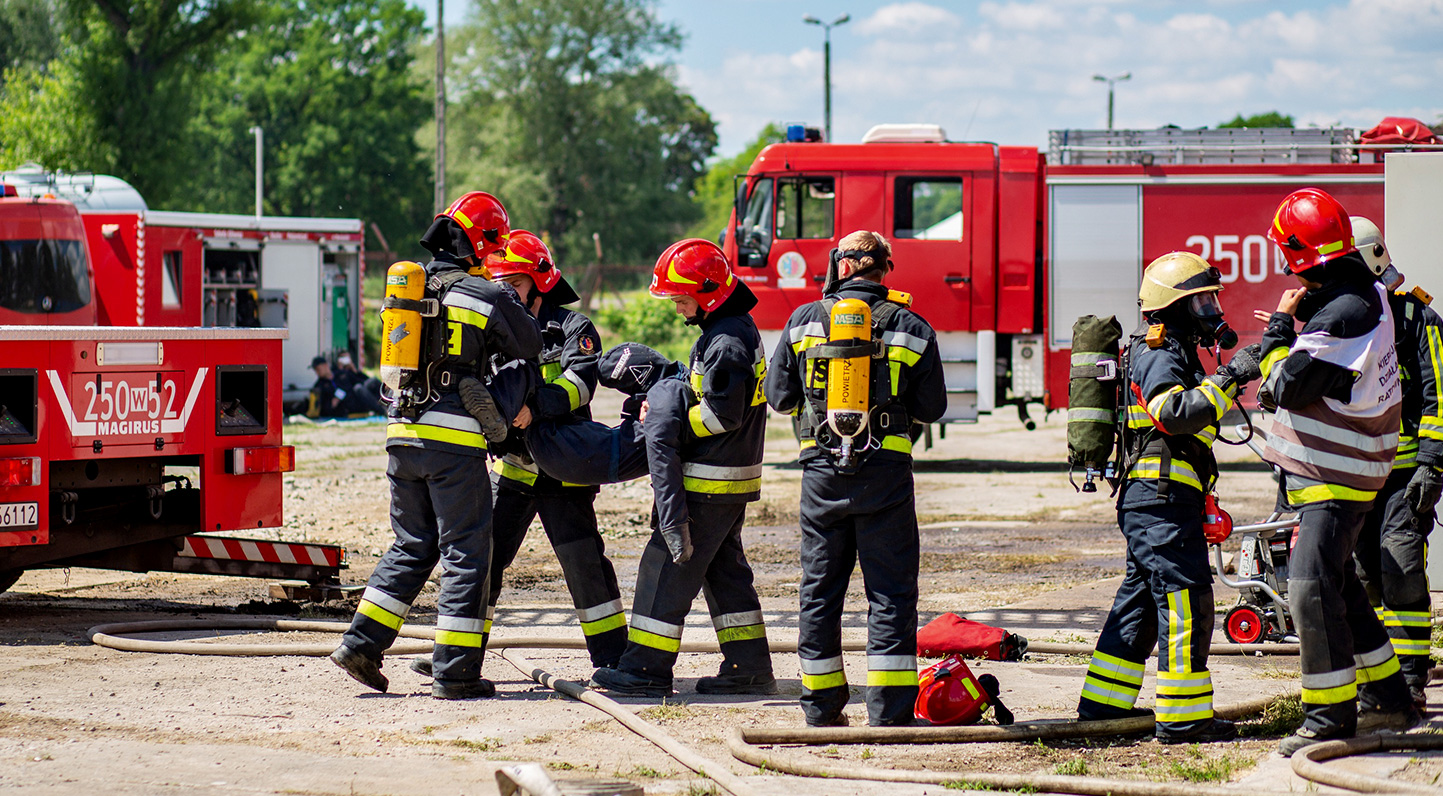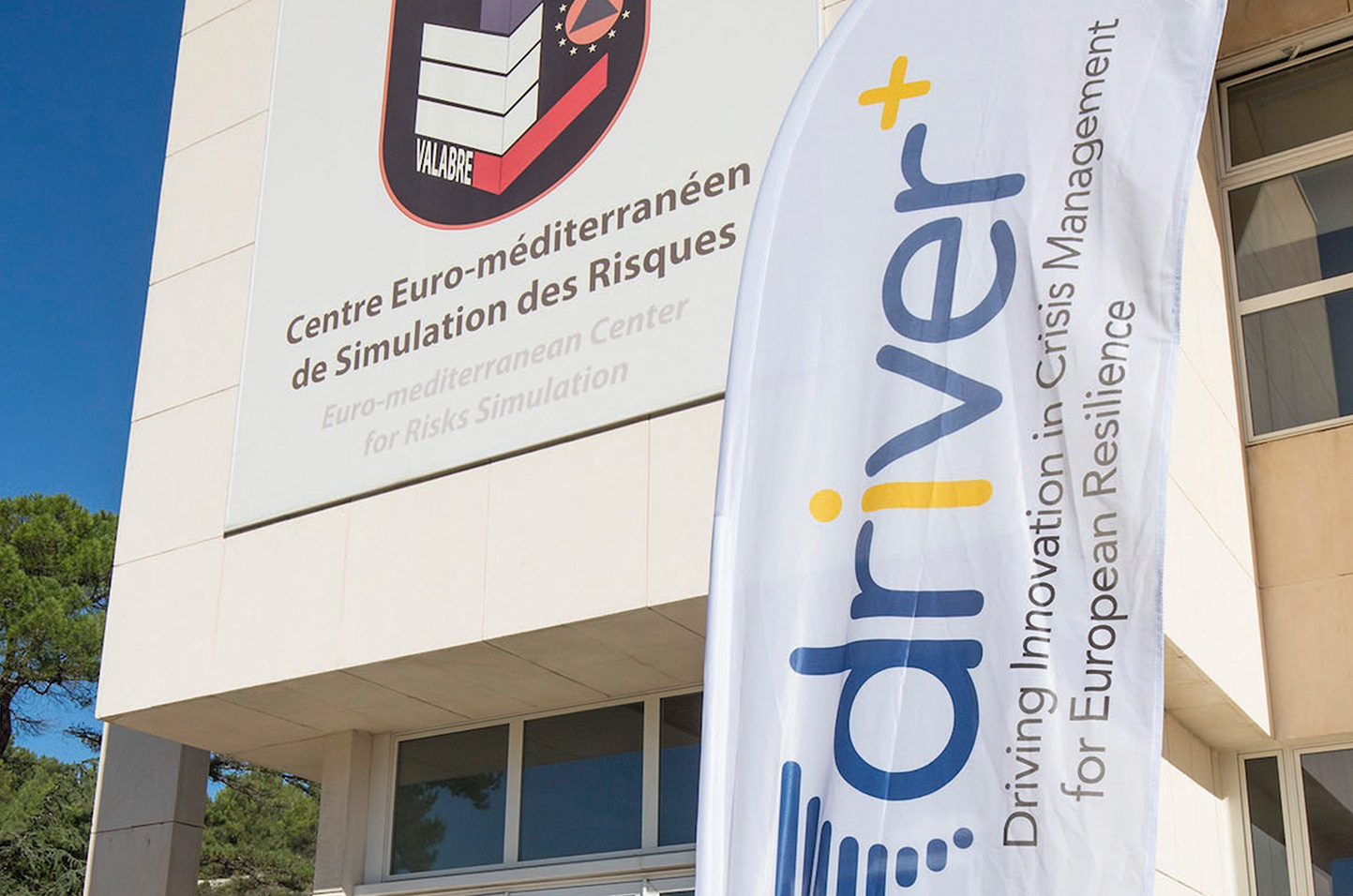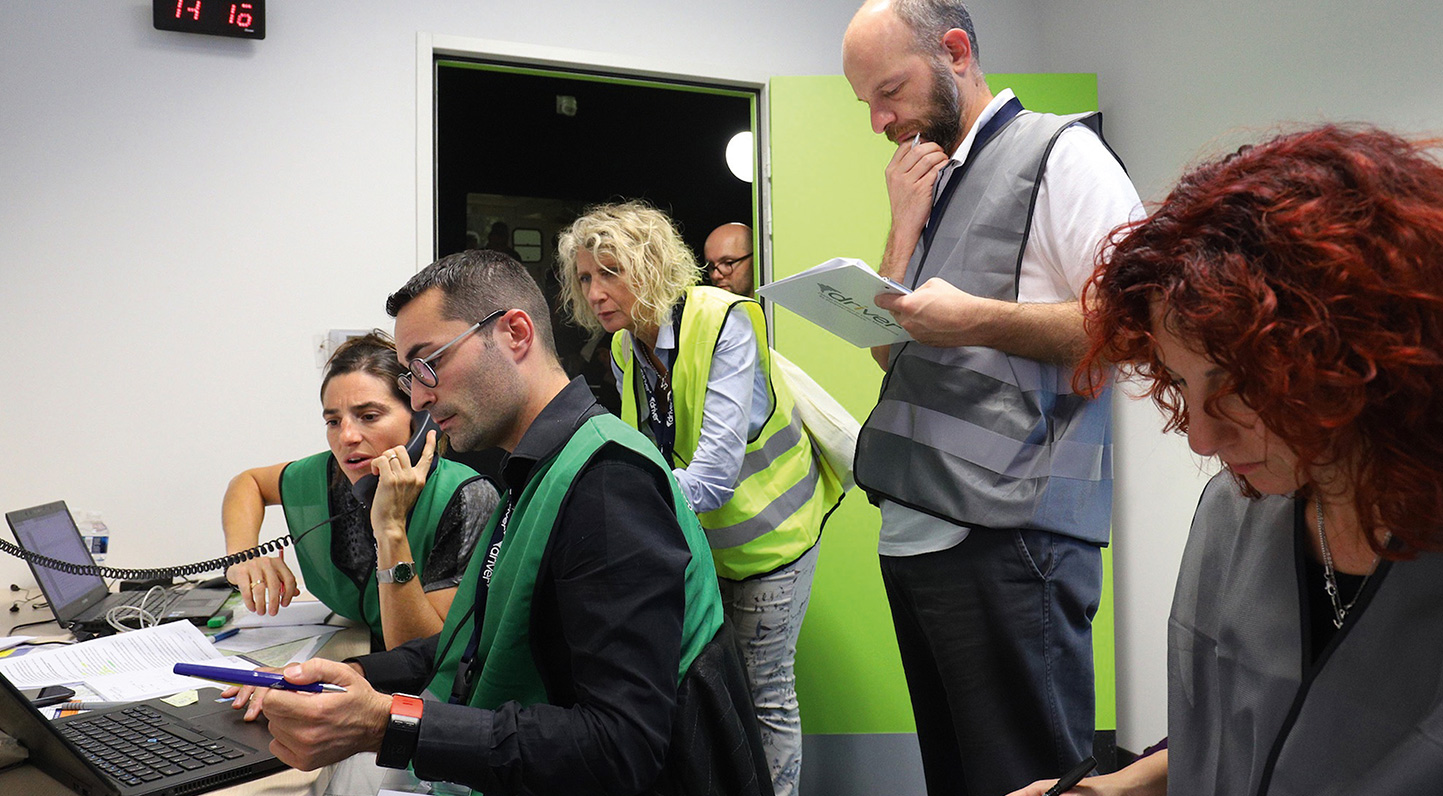Preparation phase
in France
The second trial organised within the DRIVER+ project aimed to validate the project’s trial guidance methodology while implementing first lessons learned from trial Poland. It was characterised by a different type of risk (forest fire) and it addressed different crisis management gaps and utilised different solutions. The general purpose of trial France was to improve cooperation and coordination between different organisations.

Trial Context
Context Trial France focused on a forest fire in southern France. In addition to the fire spread, the threat on a SEVESO plant had to be considered and a MasCal Situation on a nearby camping side had to be taken into account. So the main involved organisations were the fire brigade, the environmental agency and emergency services.
Objective
The mission objective within the trial scenario was the suppression of a forest fire while protecting people, goods, infrastructure and the environment. Further, the trial objectives were to assess the effect of the selected solutions within the scope of the mission and to identify factors affecting the deployment and use of the solutions.
Gap
Among the identified gaps were shortcomings in the ability to exchange crisis-related information across agencies and organisations, and to ensure a common understanding of the information exchanged for all crisis managers involved in the response operations.
Research Question
To address this gap, the following specific research question was formulated: How to improve and maintain, in real time, a shared situational awareness by supporting the exchange of crisis-related information among agencies and organisations? This broad question was then divided into four narrower and more detailed sub-research questions:
- How can relevant information be shared with crisis managers while preventing information overload?
- How can sociotechnical solutions improve the quality of the information exchanged?
- Can sociotechnical solutions improve the understandability of the information exchanged among the different actors involved despite different backgrounds (discipline, culture, language, etc.)?
- Can these solutions save time in exchanging information between different agencies?
Data Collection Plan
In order to answer these detailed questions, a large array of data sources was defined. These included:
- Factual information collected by trial owner during the trial.
- Logs from the test-bed technical infrastructure (including exchange of information involving the innovative solutions and the simulators).
- Logs and other types of data (pictures) from innovative and legacy solutions.
- Observation sheets completed by observers during the trial, after each session.
- Participants’ questionnaires completed by all participants immediately after the trial.
- Solution questionnaires completed by the practitioners immediately after the trial.
- Debriefing of the practitioners (managed by the trial owner).
- Debriefing of the observers (managed by the observers’ training managers).
- Questionnaires and observation sheets to produce both qualitative (free comment boxes) and quantitative data (using Likert scales).

Evaluation Plan
The performance indicators for evaluation were defined in a two-pronged, complementary approach. A number of relevant KPIs were derived from the international standard ISO 9241-11:
- Effectiveness (can users complete tasks/achieve goals with the product, i.e. do what they want to do?).
- Efficiency (can users finish tasks faster with the help of the product?).
- Satisfaction (does the product meet the users’ requirements?).
- Learning (do users need a long learning process to effectively use the solution?).
In addition, based on the DRIVER+ taxonomy, each function of the solutions under test were evaluated for availability, relevance and maturity.
Scenario
The trials overall scenario was a large forest fire in the South East of France with cascading effects on a chemical plant (power outage caused by the spreading fire) and on human settlements (a campsite with tourists was threatened by the fire and people disrespecting security advice and escaping the campsite on foot). The latter element was introduced to consider the CM capability gap on cooperation between fire fighter and emergency medical services, based on recent experiences during forest fires with casualties in Portugal (2017) and Greece (2018).
Selected solutions
Among the solutions selected for the trial was CrisisSuite, which provides a centralised data exchange platform including tasking for all organisations (definition of tasks and task progress management), a common log environment and automated generation of situation reports based on tasking and logs.

